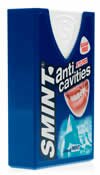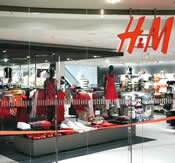Inflight Magazine of Brussels Airlines
Welcome to the Inflight Magazine of Brussels Airlines
Business trends
Boyd Farrow rounds up what’s happening in the business world across Europe
Square-eyed consumers
 New TV technology set to keep Europe glued to the goggle box
New TV technology set to keep Europe glued to the goggle box
Data from Eutelsat indicates that the number of satellite channels available to consumers across Europe will rise from 27,000 in 2009 to 40,000 in 2019 – including more than 7,600 high-definition (HD) channels (which currently make up just 3% of the European market). The recent innovation of 3D TV will also gain popularity, with 1,800 channels expected by 2019.
Unsurprisingly, broadcasters’ enthusiasm for new technology comes at a time when their ad revenues are under pressure. Charging for premium HD and 3D services could provide an alternative source of income for the firms in the long term, even though content isn’t evolving as fast as the technology and there aren’t yet 3D glasses that can be used with all TV sets.
And there’s more good news for Europe’s broadcasters: according to a report by research firm Eurodata, consumers in some of Europe’s biggest markets are spending more time watching television. The survey suggested people in the UK dedicated three hours 57 minutes a day to TV during the first eight months of 2010 – a 15-minute increase on 2009. Similarly, the average Spaniard spends three hours 49 minutes sitting in front of the box, a six-minute improvement. It also seems that despite the rise of the internet, young adults refuse to kick the TV habit. British teenagers devoted 12 more minutes each day to regular broadcast content than in 2009 – two hours 45 minutes – and Spanish teenagers two hours 26 minutes, which is four minutes more than in the previous year.
Home-made heroes?
 Prada embraces international artisans, while the European Union wants mandatory ‘made in’ labels for imported goods
Prada embraces international artisans, while the European Union wants mandatory ‘made in’ labels for imported goods
Prada is introducing country-of-origin labels to its clothes, taking into account where the garment has been manufactured and from where “it has been inspired”. Miuccia Prada, the creative force behind the high-end Milanese fashion house, told the International Herald Tribune that the move is about “taking away the hypocrisy” of the idea that everything is made in Italy. Although she insists that 85% of the brand’s goods are made in Italian factories, the designer proclaims that tapping into international artisans is OK, too.
The company has just launched Made in Scotland (tartan wool kilts from workshops that specialise in centuries-old manufacturing techniques); Made in India (handmade Chikan embroidery); Made in Japan (jeans produced by denim manufacturer Dova); and Made in Peru (alpaca wool knitwear). “It’s something I’ve been thinking about for a long time and there are many different aspects,” says Miuccia. “Made in Italy – who cares? It’s not a brand strength if you have to defend your work. You have to embrace the world if you want to live in it now.”
Prada is nothing if not on trend: days after the announcement, the EU moved closer to new rules to protect its manufacturers from cheap Asian imports. Imported shoes, clothes, leather, furniture and ceramics will have to carry a label that shows where they were made when sold in the EU, according to a committee vote by the European Parliament. Italy, Spain and Portugal have long pushed for mandatory ‘made in’ labels, which they hope will act as a brake on growing low-cost imports, whether Chinese furniture, Indian clothes or Vietnamese shoes. Opposing them are Sweden and Britain, who fret about red tape and falling profits.
Drink and drive social change
 German brand launches beverages with a conscience
German brand launches beverages with a conscience
‘Drinking helps!’ This is the slogan of Hamburg-based company LemonAid Beverages, which aims to use its funkily packaged bottled drinks to help effect social change across several countries. The brand’s fresh organic juice, for example, comes from a small farming cooperative in Brazil called Coagrosol, while its sugar cane is derived from a Paraguay cooperative called La Felsina. Not only does LemonAid pay its suppliers higher prices on account of its fair-trade practices, but it also donates a major share of its yearly revenue to further support grassroots projects in the developing world. Specifically, for every bottle of LemonAid sold, a percentage of the proceeds is donated back to the countries from which its ingredients derive.
The company says it isn’t trying to target the usual health food shop client, and so far LemonAid has been sold in trendy bars and stores throughout Germany, Sweden, Denmark, Austria and Switzerland. “Just in case you were wondering: no, we’re not going to sell it off to Coke one day,” adds the LemonAid website.
Saucy Smints
 Breath mint company appeals to customers’ naughty side
Breath mint company appeals to customers’ naughty side
Smint has taken away the breath of many a Spanish customer with a six-month campaign offering ‘sensual’ products in exchange for points. A code is printed on each box of mints; consumers then register on the Smint Me Hot website, enter their code and points are added to their account – which can be redeemed on a selection of adult toys, including a vibrator.
Smint’s parent company, Barcelona-based Chupa Chups, raised eyebrows a year ago when the Moscow-based creative agency Firma posted three adult interpretations of the famous lollipops online – BDSM, Fetish and Toys. The products have not yet gone into production. But the Spanish aren’t exactly known to be coy when it comes to marketing campaigns. To celebrate this year’s Madrid Pride parade in July, Fiat customised a number of its 500 models in various outfits, including the ‘Drag’, with feathers and sequined lycra, and the ‘Leather’, adorned with straps and studs. They can’t compete with the Germans, however. In the same month, Mini Cooper launched a campaign in Hamburg featuring the slogan, ‘A good Mini takes you to heaven. A bad Mini takes you everywhere’. In the Reeperbahn, a billboard featured the rear of a Mini and an S&M whip. The billboard gave out a five-digit number and code word; upon texting the word to the number, the whip would strike the Mini, which would then sound its horn…
Video victory
 YouTube fends off breach of copyright claim by Spanish television channel
YouTube fends off breach of copyright claim by Spanish television channel
Judges in Madrid have ruled that YouTube did not violate a TV channel’s copyright by hosting shows uploaded by users – a verdict hailed by the site’s owner Google as “a clear victory for the internet” following a long-running dispute.
The case centres on the private TV channel Telecinco, which claimed that the online video platform was in breach of its intellectual property rights by rebroadcasting its content. In 2008 another Spanish court ruled in favour of the TV channel, ordering YouTube to suspend the videos, but the new verdict recognised the difficulties the site has with deleting content that violates copyright laws. It noted that it is “physically impossible to control all the videos that are made available to users, as there are in fact more than 500 million.” Any user can put videos on the site, with an estimated 24 hours of content uploaded each minute. Had the court ruled in favour of Telecinco, YouTube could have been forced to implement much stricter rules on uploading, including monitoring all content uploaded to the site.
Responding to the verdict, Google said: “This decision reaffirms European law, which recognises that content owners (not service providers such as YouTube) are in the best position to know whether a specific work is authorised to be on an internet hosting service.” It added that if internet sites had to screen all videos, photos and text before allowing them, many popular sites, including Facebook, Twitter and MySpace, would simply grind to a halt.
Shop till you drop?
 H&M’s growth is hampered by lack of retail space
H&M’s growth is hampered by lack of retail space
The world’s third biggest fashion retailer, H&M, has been forced to slow its global expansion plans as new shopping mall developments grind to a halt in crisis-hit southern Europe. The Stockholm-based brand said construction hold-ups would result in the company opening 20 fewer stores than planned this year.
H&M has pressed ahead with expansion throughout the financial crisis, taking advantage of reduced demand to snap up prime retail locations across Europe and North America. Announcing its latest results, however, chief financial officer Jyrki Tervonen said it was difficult to find premises as the economic recovery increases demand for retail space in some countries, while construction projects are delayed in those markets still engulfed by problems.
Sales continued to recover strongly from last year’s downturn but profits missed analysts’ forecasts as aggressive price-cutting, aimed at increasing market share, eroded margins. Net profits rose 23% to €470m in the three months to 31 August, while sales were up 14%. The company has more than 2,000 stores in around 37 markets, and employs some 76,000 staff worldwide. Tervonen said H&M remained committed to expanding its chain by 10-15% each year. Much of the focus is on Asia, where sales have doubled over the past year.
Probably the best water in the world?
 Carlsberg looks beyond beer
Carlsberg looks beyond beer
The world’s fourth biggest brewer is considering expanding its product line. At Carlsberg’s annual investor day, chief executive Jorgen Buhl Rasmussen announced it could turn to bottled water and soft drinks – pointing to its successful launches in Russia of Somersby cider and Eve, a fruit-flavoured, low-alcohol malt beverage aimed at women. Without much fanfare, the group also recently released fruit beer Tuborg Lime Cut in Denmark and Norway.
Rasmussen stated that the Copenhagen company was to target women in general, and northern and western Europe, saying, “When we look at innovation in the future, we will see products that support beer.” While beer sales are falling, Carlsberg claims operating costs per hectolitre of beer are also dropping this year, and is standing by its mid-term target for operating margin in its northern & western Europe division to rise to 15-17% in 10 years. In 2009, the margin was 11.6%. Carlsberg has entered into a new five-year multi-currency revolving credit facility of €1.75bn to fuel future growth. What exactly the funds will be used for remains unclear; some of the money could be used to refinance debt that is due in the near future, but there is much speculation, including talk of a possible takeover.
Supermarket sweep
 Big-name western European brands gain ground in Poland
Big-name western European brands gain ground in Poland
While supermarkets dominate western Europe, with a 70-80% market share, the corner shop has remained a big part of Polish life. Supermarkets only account for some 30% of sales in the country – but this is set to change as international giants such as British chain Tesco, German brand Real and Portuguese-owned Biedronka take an ever larger slice of the market. The Polish daily Rzeczpospolita estimates that 4,000 corner shops will close in 2010 alone.
Biedronka has emerged as the leader of Poland’s supermarket sector. Offering no-frills shopping and discounted prices, the retailer entered the market in 1997 and expanded by buying out smaller rivals and opening new stores. In 2007, Biedronka was opening a new store in the country every three days; today its smiling ladybird logo graces the front of more than 1,500 outlets. And 2010 has been a record-breaking year: second quarter sales rose by 28% to €1.13bn, reportedly accounting for 54% of Portuguese owner Jerónimo Martins’ profits.
The competition is hotting up, however. Danish retailer Dansk Supermarked is planning a major expansion of its network of Netto stores in Poland, and one-time market leader Tesco is also striking back. The British giant believes it has a new weapon, hoping to revolutionise Poland’s online shopping sector when it debuts on the .pl domain next year.
Nutrition from Nestlé
 Swiss giant to invest millions in new Health Science division
Swiss giant to invest millions in new Health Science division
Nestlé is aiming to pioneer a new industry that sits “between food and pharma”, to exploit the rising demand for nutritional products around the world. The company, based near Geneva, has announced the creation of Nestlé Health Science, which will start operations from January 2011 and will be run at “arm’s length” from the company’s food and beverage brands.
The driving forces behind the initiative are ageing populations, increasing healthcare costs and the rapid advances in associated technology. The division takes responsibility for the HealthCare Nutrition portfolio, an area delivering €1.2bn in revenues last year. Among the products are Clinutren enriched food and drinks, Carnation instant breakfast and the Optifast weight-loss line. Nestlé has also established an Institute of Health Sciences, which is set to receive “hundreds of millions” of Swiss francs in funding over the next decade. Its remit encompasses research and translating findings into strategies that can be employed by the company. “In 10 years, we will be the undisputed leader in the new ‘health science nutrition’ business,” said chief executive Luis Cantarell. “Our development capabilities will help drive product innovation and organic growth.” The division also plans to acquire or licence products.
Leave a Reply
